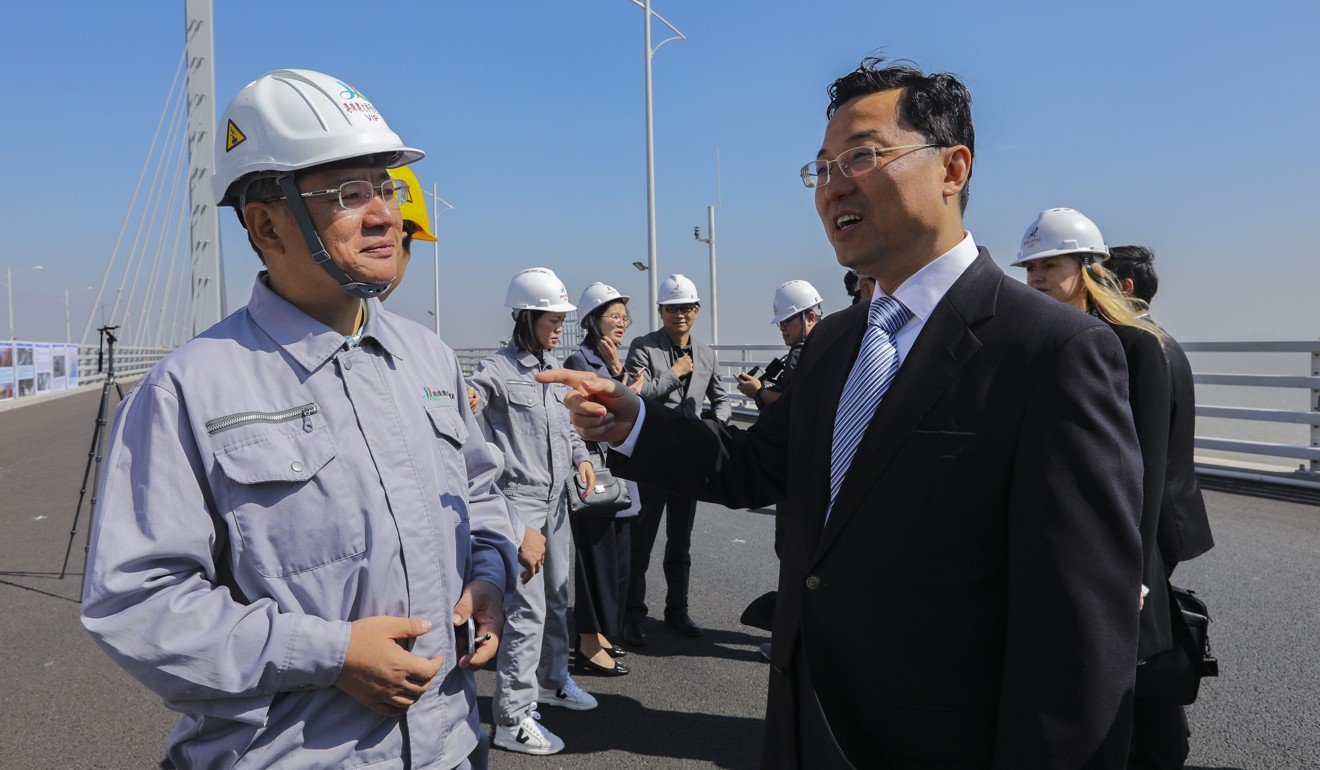
Hong Kong-Zhuhai-Macau bridge can shorten travel times and extend opportunities
Ken Chu says the long-talked-about bridge is no longer about boosting manufacturing for Hong Kong industry, but will instead bring many benefits by cutting commute times and opening up new options for travel and work
The Hong Kong-Zhuhai-Macau bridge lights up for 2018
Officials must come clean on bridge bill
Transport links between Hong Kong and cities in the western delta such as Foshan, Zhongshan and Jiangmen are undeniably weak. When going to any of these cities from Hong Kong by road or train, we currently must take a detour, travelling north to Shenzhen and crossing the Humen Pearl River Bridge.
Also, on long weekends, many Hong Kong holidaymakers go to Macau en masse for a short break, but the only way for most folks to go to the former Portuguese enclave is by sea (helicopters being a rather expensive means of travel), and it takes more than an hour by jetfoil. With the completion of the bridge, Hongkongers will be offered another way to go to Macau and, most importantly, the journey can be cut by half, making it less than the time required to travel from New Territories to the gridlocked districts in Hong Kong, such as Causeway Bay, and look for a car park.
Beijing implies support for Hong Kong’s plan to build schools, hospitals and elderly care centres in Greater Bay Area
Likewise, the journey time from Hong Kong to Zhuhai will also be halved, effectively putting these three cities within a one-hour radius. What would be the implications for Hong Kong?

What tiny Luxembourg can teach ageing Hong Kong about labour mobility in the Greater Bay Area
There certainly could be potential positive and adverse impacts on the territory after the opening of the bridge. Coming first to mind is the boost given to the development of the Lantau Island, where the northern side is earmarked for commercial and housing development, while the southern is for recreational and tourism purposes. Indeed, the bridge will further enhance Lantau’s role as a bridge between Hong Kong and the Greater Pearl River Delta. In turn, well-planned development on Lantau will harness Hong Kong’s position as an international financial, transportation and trade centre.
However, there are potential negative impacts for Hong Kong to consider. If more mainland vehicles with cross-border permits make their way into the territory, the road conditions, particularly in Lantau and New Territories West, might deteriorate. If landlords in districts such as Tuen Mun and Tung Chung see a greater flow of people and goods as a result of the bridge, this might serve as an excuse to raise home prices and rents. These are just some of the adverse impacts that our government should be prepared to tackle after the bridge opens, so as not to spoil any opportunity for Hong Kong to make the best out of the bridge.
Dr Ken Chu is group chairman and CEO of the Mission Hills Group and a National Committee member of the Chinese People’s Political Consultative Conference

